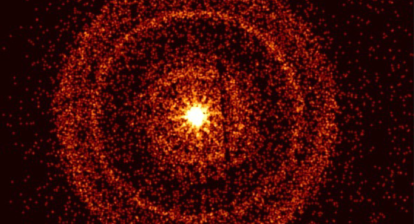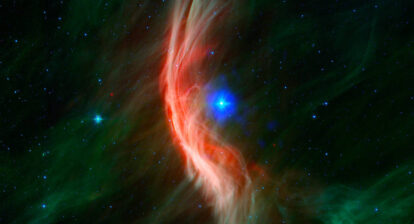Behold this absolutely stunning image by NASA’s Chandra X-ray Space Observatory. It is of Arp 299, a system where two galaxies are colliding 140 million light years from Earth. This region can also boast of 14 “ultra-luminous X-ray sources” (ULXs) that have been discovered here. According the Chandra Xray instagram post, where the image was shared, these 14 ULX sources are all likely blackholes or neutron stars pulling material from a companion star much more massive than our Sun. New data from Chandra also reveals that there are 25 bright X-ray sources throughout the Arp 299 system.
Chandra X-ray observatory is a telescope launched on July 23, 1999 and is NASA’s flagship mission for X-ray astronomy. Specially designed to detect X-ray emission from very hot regions of the Universe such as exploded stars, clusters of galaxies, and matter around black holes, Chandra orbits above the Earth’s atmosphere up to an altitude of 139,000 km (86,500 mi) in space. It has imaged glowing remains of exploded stars, and has observed the region around the supermassive black hole in the centre of the Milky Way, in addition to finding black holes across the Universe.
Furthermore, it has traced the separation of dark matter from normal matter in the collision of galaxies in a cluster and is contributing to both dark matter and dark energy studies.
Photo: X-ray (Chandra and NuSTAR): NASA, CXC, Univ of Crete/K. Anastasopoulou et al, NASA, NuSTAR, GSFC/A. Ptak et al; Optical (Hubble): NASA, STScI from NASA Chandra Xray instagram


![The bright white object at lower left is the asteroid Dimorphos. It has a blue dust tail extending diagonally to the upper right. A cluster of blue dots surrounds the asteroid. These are boulders that were knocked off the asteroid when, on 26 September 2022, NASA deliberately slammed the half-tonne DART impactor spacecraft into the asteroid as a test of what it would take to deflect some future asteroid from hitting Earth. Hubble photographed the slow-moving boulders in December 2022.] Credit: NASA, ESA, D. Jewitt (UCLA)](https://www.360onhistory.com/wp-content/uploads/2023/07/heic2307a-414x224.jpg)




